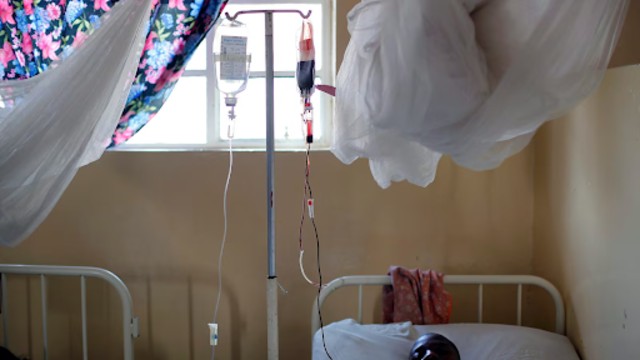
Penina Mukandaysenga lays in her hospital bed at Rutshuru hospital, now under control of M23 rebels some 75 km (48 miles) north of Goma, eastern Congo, Saturday, Aug. 4, 2012. (AP Photo)
A fast-spreading, unidentified disease has killed more than 50 people in northwestern Congo within the past five weeks. The mystery illness outbreak, which started in January, has left health officials alarmed due to its rapid fatality rate.
A Troubling Outbreak
The first known cases emerged in the village of Boloko on January 21, when three children died within 48 hours of consuming a bat. Since then, the disease has infected 419 people and caused 53 deaths, according to the Africa office of the World Health Organization (WHO).
Severe and Fatal Symptoms
Patients exhibit symptoms of hemorrhagic fever, including high fever, vomiting, and internal bleeding. Most victims succumb to the illness within two days of showing symptoms, a pattern that has deeply concerned medical experts.
Serge Ngalebato, medical director at Bikoro Hospital, described the short interval between symptom onset and death as a major red flag.
Unknown Virus Raises Concerns
Initial laboratory tests have ruled out known hemorrhagic fever viruses such as Ebola, Marburg, dengue, and yellow fever. Samples from 13 cases were sent to the National Institute for Biomedical Research in Kinshasa for further testing. While some tested positive for malaria, none showed links to the usual deadly viruses.
Possible Animal-to-Human Transmission
The outbreak has reignited concerns about zoonotic diseases—illnesses that jump from animals to humans. The WHO previously reported a 60% rise in such outbreaks across Africa over the past decade, often linked to the consumption of wild animals.
The situation escalated further when a second outbreak began in the village of Bomate on February 9, spreading the disease beyond its initial location.
Searching for Answers
Health experts are racing to determine the cause of this deadly outbreak. In a similar case last year, a mystery flu-like illness that killed dozens in another part of Congo was ultimately attributed to malaria. However, the current outbreak’s hemorrhagic symptoms and rapid progression suggest a different and potentially new threat.
Authorities and health organizations continue to monitor the situation closely, hoping to identify the source and contain the disease before it spreads further.















